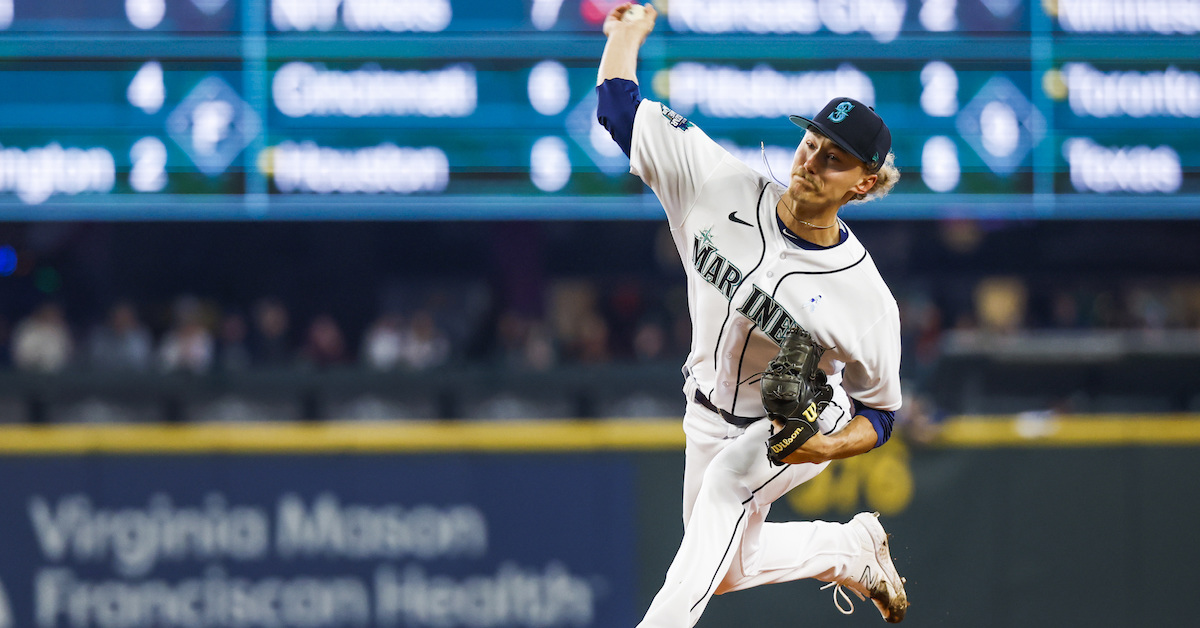Effectively Wild Episode 2026: Sound and Furries

Ben Lindbergh and Meg Rowley banter about Andrew McCutchen’s latest “furries” tweet, the Pirates playing through a high AQI and the need for a safety standard, Domingo Germán’s perfect game and the state of the Yankees, Yandy Díaz turning back into Ground Beef, Shohei Ohtani lapping his league and strangely struggling at the plate with two strikes, and the Orioles’ Pride Night, then (1:02:25) answer listener emails about pointing giant fans at the field, an official scoring decision on a Luis Arraez single, whether the Reds should have called up Elly De La Cruz sooner, whether contending teams should aim for playoff matchups with the Central division winners, and whether playing MLB The Show could affect a player’s IRL performance, plus (1:34:46) a Future Blast from 2026.
Audio intro: Alex Ferrin, “Effectively Wild Theme”
Audio outro: Liz Panella, “Effectively Wild Theme”
Link to latest “furries” tweet
Link to McCutchen “furries” explainer
Link to info on fursuit protectiveness
Link to AQI concerns
Link to Pirates’ game-delay tweet
Link to Sheehan on Germán
Link to Paine on the perfecto
Link to “Her?” montage
Link to Yankees offense post-Judge
Link to FG playoff odds
Link to xBAs from the perfecto
Link to longest sub-100-pitch-GS streaks
Link to list of perfectos
Link to perfecto pitch counts
Link to Félix-meme tweet
Link to Germán apology article
Link to other Germán apology article
Link to MLBTR on O’Hearn
Link to story about O’s Pride Night
Link to O’s Pride Night tweet
Link to O’s Pride Night montage
Link to The Athletic on the Rangers
Link to Yandy’s monthy splits
Link to Ben’s Ohtani article
Link to MLBTR’s Ohtani job listing
Link to combined WAR leaderboard
Link to wOBA with <2 strikes
Link to wOBA with 2 strikes
Link to story about Cameron and Félix
Link to info on Félix and fastballs
Link to more on Félix and fastballs
Link to even more on Félix and fastballs
Link to Passan on Pedro and Elly
Link to story about Metrodome fans
Link to Arraez play
Link to info on DiMaggio streak scoring
Link to MLB.com on Elly’s call-up
Link to MLBTR on Elly’s call-up
Link to Harris II’s Real 99 card
Link to listener emails database
Link to Rick Wilber’s website
![]() Sponsor Us on Patreon
Sponsor Us on Patreon
![]() Facebook Group
Facebook Group
![]() Twitter Account
Twitter Account
![]() EW Subreddit
EW Subreddit
![]() Effectively Wild Wiki
Effectively Wild Wiki
![]() iTunes Feed (Please rate and review us!)
iTunes Feed (Please rate and review us!)
![]() Get Our Merch!
Get Our Merch!
![]() Email Us: podcast@fangraphs.com
Email Us: podcast@fangraphs.com
Podcast (effectively-wild): Play in new window | Download
Subscribe: RSS







